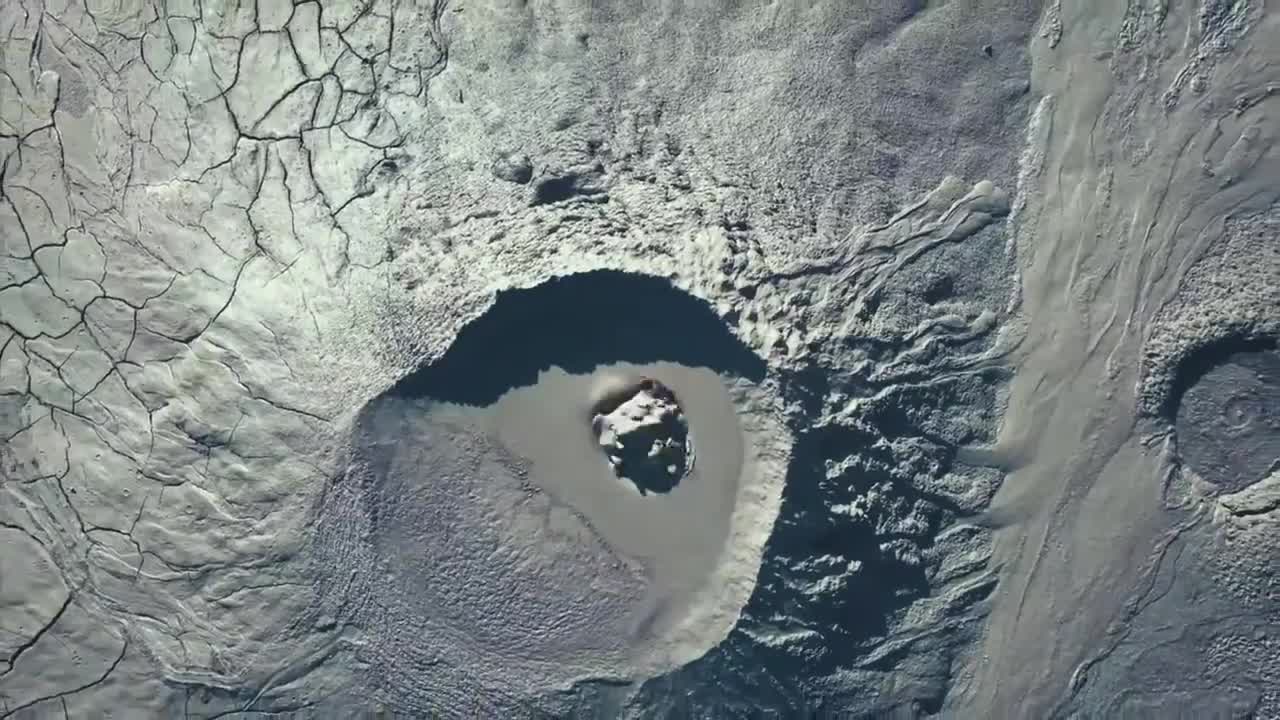Premium Only Content

Romania - Mud Vulcano / How can there be such a thing?
Mud volcano or mud dome is a landform created by the eruption of mud or slurries, water and gases. There are several geological processes that may cause the formation of mud volcanoes. Mud volcanoes are not true igneous volcanoes as they do not produce lava and are not necessarily driven by magmatic activity. The Earth continuously exudes a mud-like substance, which may sometimes be referred to as a "mud volcano". Mud volcanoes may range in size from merely 1 or 2 meters high and 1 or 2 meters wide, to 700 meters high and 10 kilometers wide.[1] Smaller mud exudations are sometimes referred to as mud-pots. The largest (man made) mud volcano is "Lusi" in Java, Indonesia, which is 10 kilometres (6 mi) in diameter.[2]
The mud produced by mud volcanoes is most typically formed as hot water, which has been heated deep below the earth's surface, begins to mix and blend with subterranean mineral deposits, thus creating the mud slurry exudate. This material is then forced upwards through a geological fault or fissure due to local subterranean pressure imbalances. Mud volcanoes are associated with subduction zones and about 1100 have been identified on or near land. The temperature of any given active mud volcano generally remains fairly steady and is much lower than the typical temperatures found in igneous volcanoes. Mud volcano temperatures can range from near 100 °C (212 °F) to occasionally 2 °C (36 °F), some being used as popular "mud baths."
About 86% of the gas released from these structures is methane, with much less carbon dioxide and nitrogen emitted. Ejected materials are most often a slurry of fine solids suspended in water that may contain a mixture of salts, acids and various hydrocarbons.
Possible mud volcanoes have been identified on Mars.
A mud volcano may be the result of a piercement structure created by a pressurized mud diapir that breaches the Earth's surface or ocean bottom. Their temperatures may be as low as the freezing point of the ejected materials, particularly when venting is associated with the creation of hydrocarbon clathrate hydrate deposits. Mud volcanoes are often associated with petroleum deposits and tectonic subduction zones and orogenic belts; hydrocarbon gases are often erupted. They are also often associated with lava volcanoes; in the case of such close proximity, mud volcanoes emit incombustible gases including helium, whereas lone mud volcanoes are more likely to emit methane.
Approximately 1,100 mud volcanoes have been identified on land and in shallow water. It has been estimated that well over 10,000 may exist on continental slopes and abyssal plains.
-
 5:16
5:16
Warrior's Respite
3 years agoIs There Such Thing as a Functional Alcoholic or Addict?
36 -
 2:11
2:11
AMERICA First with Sebastian Gorka
4 years ago $2.51 earnedThere is NO such thing as a "President-Elect"! Sebastian Gorka speaking at #SAS2020
3.02K13 -
 1:29
1:29
Floridabobcat
4 years agoThere is NO SUCH THING as a "government buyback" of firearms.
3463 -
 3:54
3:54
CountingTheDays
3 years agoThere is No New Thing Under the Sun
286 -
 0:35
0:35
The Wayne Dupree Podcast
3 years agoBiden Claims There Isn't a Single Thing Men Can Do Better Than A Woman
97833 -
 6:04
6:04
SamanthaMarcinkoCoach
3 years agoWhy is being Selfish such a bad thing?
58 -
 1:53
1:53
SmeeraStefania
3 years ago $0.02 earnedROMANIA - BUCHAREST 2021
150 -
 54:38
54:38
LFA TV
1 day agoThe Resistance Is Gone | Trumpet Daily 12.26.24 7PM EST
75K12 -
 58:14
58:14
theDaily302
23 hours agoThe Daily 302- Tim Ballard
71K13 -
 13:22
13:22
Stephen Gardner
16 hours ago🔥You'll NEVER Believe what Trump wants NOW!!
119K347